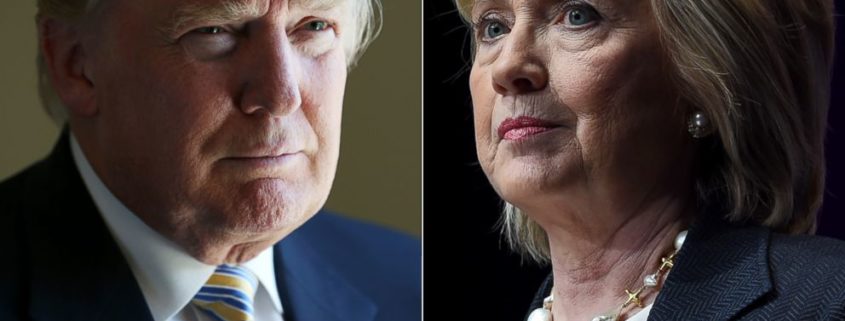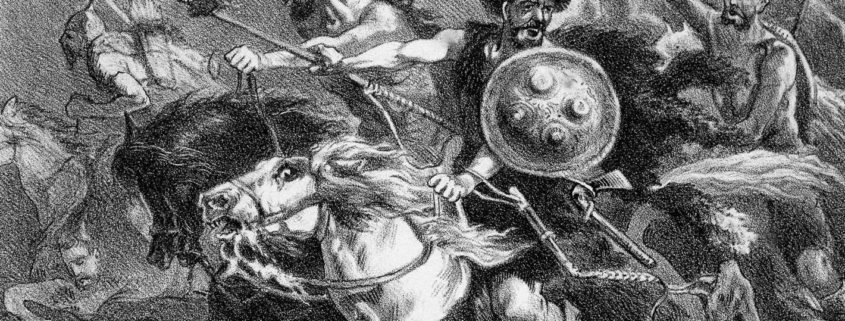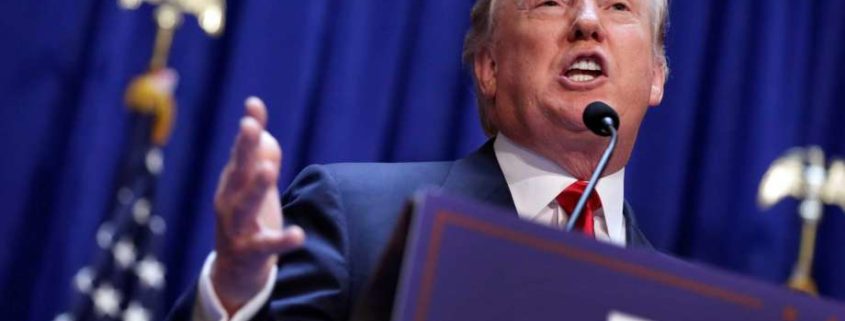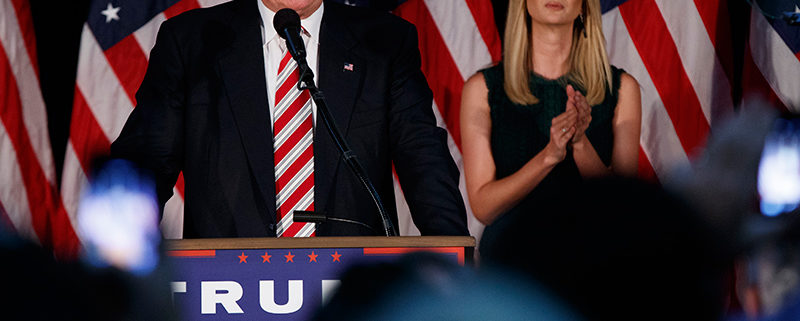By Ed Kilgore
The week before last I looked at Donald Trump’s likely “path to victory” and adjudged it as “a tightrope walk down an insanely narrow path to 270 electoral votes.” I’d now take out the adjective insanely and maybe even suggest it’s a walk along a balance beam rather than a tightrope. As the popular-vote margin separating Clinton and Trump gradually shrinks, putting together a map of states Trump might carry involves less conjecture about where he might make gains and more confidence that he might be able to consolidate gains he has already made.
Deciding who is leading nationally or in the battleground states is, of course, a matter of choosing whose measurement of public opinion you consult. I’d automatically assume, unless there is some compelling reason to do otherwise, that polling averages make the most sense. Nationally, the most straightforward of the polling averages, from RealClearPolitics, has Clinton up by two points in a four-way race. That is her smallest lead at RCP since late July. Averages at FiveThirtyEight and HuffPost Pollster factor in trends and poll accuracy data; they give Clinton a slightly larger lead (3.1 percent at FiveThirtyEight, 4.2 percent at HuffPost). It is worth noting that only one national poll has been published with data from September 11, when the unverified conventional wisdom would have it that Hillary Clinton’s standing might have taken a fall. It also appears that Trump is getting, despite contrary expectations earlier, the traditional pro-Republican “bump” when pollsters switch from samples of registered voters to those of likely voters. That could tilt polling averages a bit more in his direction very soon.
So observers are no longer asking (at least not right now) if and when Hillary Clinton’s lead is going to blossom into the double digits, as it has occasionally done in certain polls at different points in the general-election contest. It is, by most accounts, a close race still favoring Clinton.
Something similar has happened in state polling, with a subtle but important difference: What looked a couple of weeks ago like a long wall of states in which Trump needed to overcome a long-standing Clinton lead has gotten shorter. This is most dramatically shown in the state-by-state projections from Daily Kos (a pro-Democratic but, if anything, rather impressively pessimistic outlet), which now gives Trump an advantage not only in the previously red but blue-trending states of Arizona and Georgia, but also in Florida, Iowa, Nevada, North Carolina, and Ohio. Add all that up with the states everyone expects Trump to carry and he’s at 259 electoral votes.
Other state-by-state projections (the Upshot has a nice table of them) have Clinton ahead in Florida, Iowa, Nevada, North Carolina, and Ohio (though a new Bloomberg poll of Ohio showing Trump up by five points among likely voters could change estimates of that state’s trajectory), but none by such margins that a tilt by a couple of points nationally would not topple all or most of them into Trump’s column. Then comes the point when it starts getting harder for Trump to get across the line to 270. But it is clear that if he can move Pennsylvania — a “blue” state that has been trending “red” and where the demographics offer him some strategic avenues — into the hypercompetitive category, then all things are possible for him.
It is possible, in fact, that Trump is opening up multiple paths to victory. Recent polling in both New Hampshire and Colorado — two states generally conceded earlier to be in Clinton’s pocket — is showing a decided tightening of the race. There’s also fresh evidence Trump could win in the second congressional district of Maine, which independently awards a single electoral vote. There is one scenario where even if Trump loses Pennsylvania he could get to 270 votes via New Hampshire and that 1 vote from Maine.
Clinton’s strategic advantage, however, includes not just multiple paths to 270 EVs, but an advantage in battleground-state ad and field resources. And that’s where it gets really tough for a GOP nominee who cannot afford to lose his best states.
A very granular look at Pennsylvania by Sasha Issenberg and Steven Yaccino at Bloomberg, using proprietary data, suggests that if Clinton successfully turns out her base and her less reliable voters using her GOTV advantage, she will be very tough to beat. Trump would have to “run a perfect ground game, miraculously turn out all his Republican targets, win every expected persuadable vote cast—projected to be around 187,000—and [could] still lose.” According to this analysis, he isn’t likely to win Pennsylvania unless he can dig even further into the remaining Democratic vote in the southwest part of the state.
So it’s possible Trump will hit a wall in Pennsylvania even if he does win all of those other states where white working-class voters offset millennials or minorities. Still, it could be a near thing. In another analysis, Harry Enten concludes Clinton has been outperforming what demographics and voting history would expect her to have in the Keystone State. If, as he suggests, her “natural” lead is only 3 percent, that’s a small cushion.
Sometimes you can get lulled into complacency by win-probability projections that sound immutable but really aren’t. Citigroup put out a warning about that today:
A new note from Citigroup Inc. says that while the firm still puts the probability of Hillary Clinton securing the U.S. presidential election at 65 percent, investors are not taking the remaining chance of a win by Donald Trump very seriously.
“A 35 percent probability for a Trump victory is more meaningful than investors may be appreciating,” the team, led by Chief Global Political Analyst Tina Fordham, writes in a note published on Tuesday. “Political probabilities are not like blackjack — there is only one roll of the dice, and 35 percent probability events happen frequently in real life.”
The Upshot, which rates Clinton at an even higher 79 percent win probability, offers this sobering analogy: “Mrs. Clinton’s chance of losing is about the same as the probability that an N.F.L. kicker misses a 45-yard field goal.”
Continue reading, NYMag.









